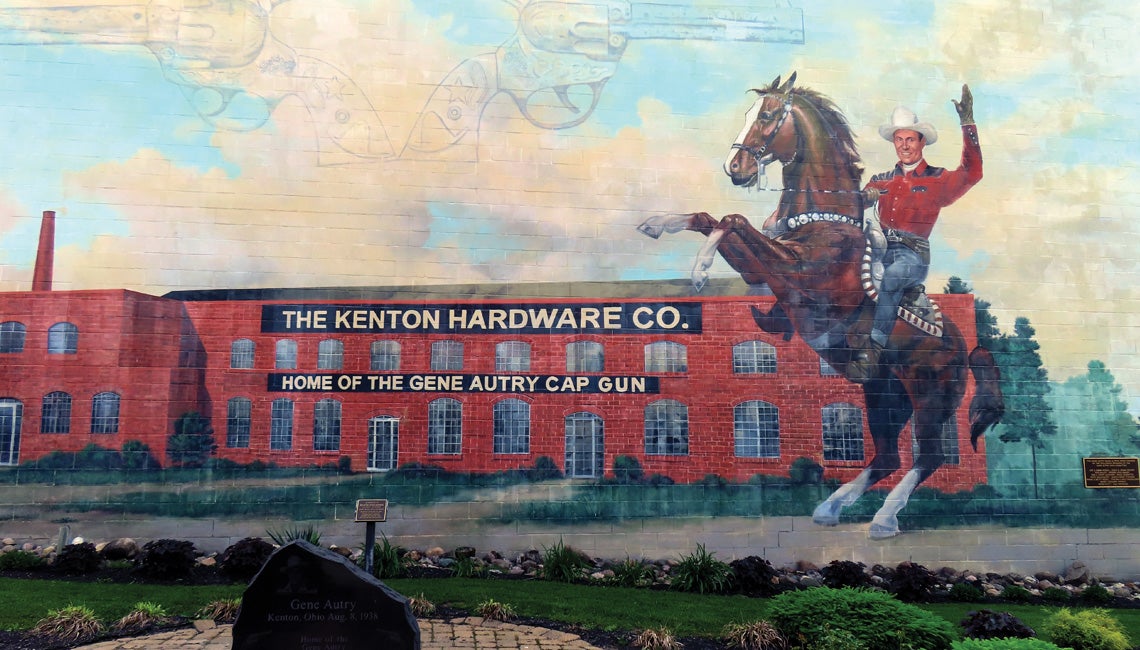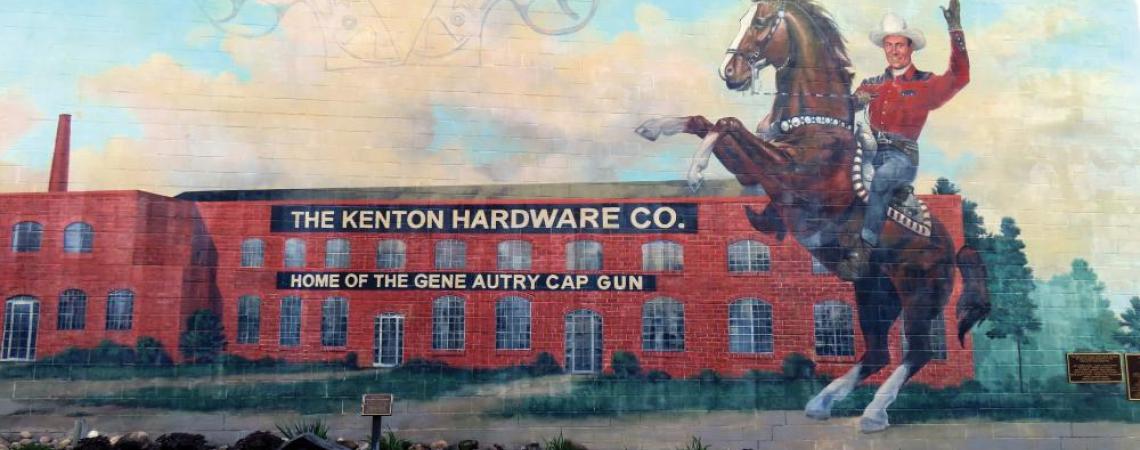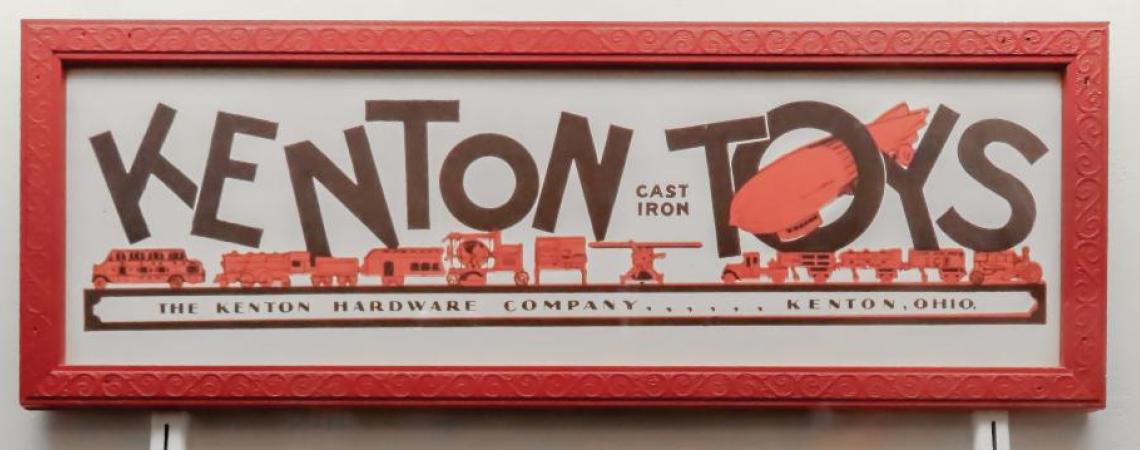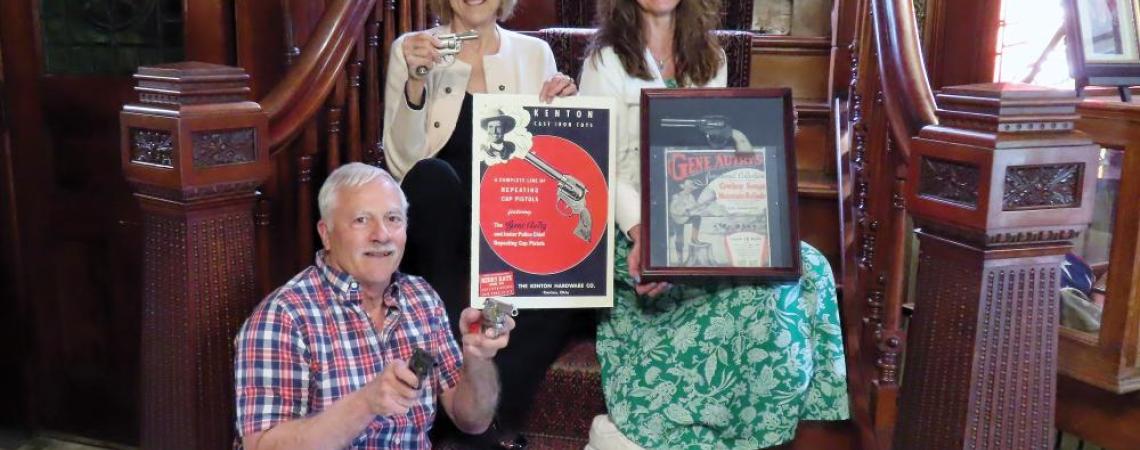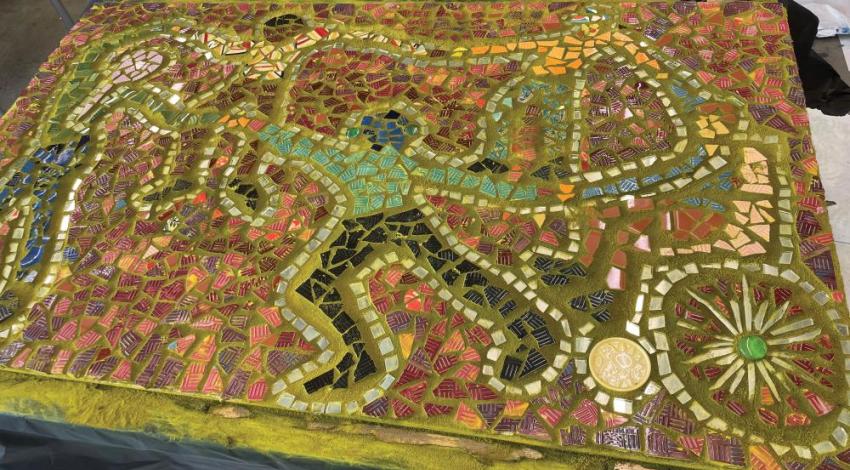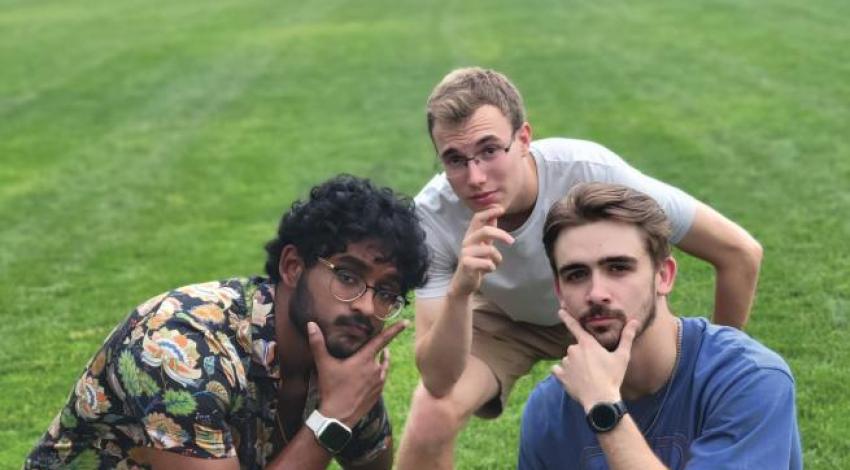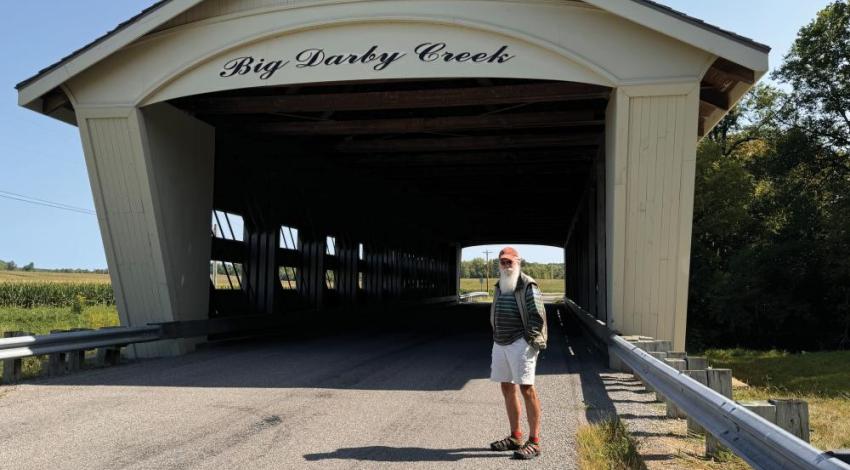Whenever people ask Brian Phillips where his downtown Kenton business is located, the investment adviser replies, “Know that big mural of the singing cowboy? My office is on the other side of it.”
The mural, in fact, depicts America’s most famous Singing Cowboy: Gene Autry. A talented singer from Texas, Autry already had a thriving radio and recording career when Hollywood gave him a shot, and the 1935 film Tumbling Tumbleweeds made Autry a movie star. He not only played himself but also personified the Singing Cowboy archetype: handsome, heroic, straight-shooting, and plain-talking — and always wearing a white hat.
This iconic mural depicts America’s most famous Singing Cowboy: Gene Autry.
Riding his sorrel horse, Champion, in scores of cowboy musicals, Autry helped to popularize country-western music with ballads like “Back in the Saddle Again,” the 1939 gold record that became his theme song. Autry’s prolific recordings also included two Christmas classics: “Here Comes Santa Claus,” which he cowrote in 1947, and “Rudolph, the Red-Nosed Reindeer,” which debuted in 1949, has sold more than 25 million copies, and remains his bestselling single.
While Autry’s career flourished during the Great Depression, the Kenton Hardware Company floundered. Started as a lock factory in 1890, the company soon switched to more profitable cast-iron toys. Kenton’s News-Republican reported in 1912 that Kenton Hardware was “the largest maker of iron toys in the world,” and under the management of L.S. Bixler, production boomed during the 1920s.
Kenton toys, which included scale models of horse-drawn conveyances, automobiles, fire engines, circus wagons, construction equipment, airplanes, and blimps, were known for their high quality and attention to detail. To ensure authenticity, Bixler dispatched master patternmaker Joe Solomon to Toledo to accurately sketch taxicabs, and he brought a Findlay-made Buckeye ditching machine to Kenton so that Solomon could replicate it in miniature.
But then came the Depression. Toy orders plummeted, and Kenton Hardware teetered on bankruptcy until Bixler’s son, company vice president Willard Bixler, suggested something new: an iron cap pistol that mimicked the pearl-handled six-shooter Autry brandished in the movies. Autry obliged by sending one of his guns to Kenton, and Solomon created a mold for a cast-iron toy featuring Gene Autry’s signature in raised lettering, a gun-metal finish, and faux pearl grips. Marketed as the Gene Autry Repeating Cap Pistol, the toy was released in 1937 and appeared for the first time in Kenton Hardware’s 1938 toy catalog. It retailed for 50 cents (at that time, a gallon of gas cost 10 cents).
Thanks to Autry’s star power, the cap pistol was a huge success. His signature on the toy was one of the first-ever celebrity endorsements, and by 1939, Kenton Hardware had sold more than 2 million units. “The factory’s production had been down to one shift, but after introducing the Autry cap guns, it ran day and night for months,” says Tim Striker, an avid Kenton Hardware toy collector and past president of the Hardin County Historical Museums.
The Autry pistol helped to save Kenton’s economy, and the grateful town declared August 8, 1938, “Gene Autry Day.” In addition to bringing Champion to the event, the Singing Cowboy did five shows at the Kenton Theatre with his troupe of country-western performers. “Autry rode Champion into the theater,” says Striker, “and the horse left his hoofprints on the stage.” At Kenton Hardware, Autry posed for a group photo with employees, including Solomon and Monette Whitmore. “Mrs. Whitmore was the factory’s fastest Autry cap pistol assembler,” explains Striker. “She got paid by the piece.”
Material shortages forced Kenton Hardware to shut down during World War II, and after the war, it faced stiff competition from plastic and tin toys imported from Japan. The company closed in the 1950s, but Kenton never forgot Autry — and the Singing Cowboy likewise never forgot Kenton; he mentioned it and the Autry pistol in his 1978 memoir, Back in the Saddle Again.
In 2004, Kenton residents hired artist Keith Hasenbalg to paint a 30-foot-tall mural commemorating Autry and Kenton Hardware on the side of a building at the corner of West Franklin and Market streets near the Hardin County Courthouse.
The mural depicts a smiling and waving Autry astride Champion with the brick toy factory in the background and two cap pistols in the sky. It’s the focal point of Gene Autry Mural Park, a small but pleasant green space with pretty gardens and wagon wheel-style benches. Appropriately enough, the huge mural and tiny park are catercorner from Kenton’s historic theater, which still shows movies nearly 90 years after Autry performed there.
When Phillips, a member of Mid-Ohio Energy Cooperative, bought the mural-sided building for his Financial Matters business, the transaction included the park property. Thus, even though Autry Park is open to the public, it’s privately owned by Phillips, who maintains the mural and the landscaping with his own funds and help from a local foundation. Kenton residents like Striker, who donated a new American flag for the park’s flagpole this year, lend support, too.
The Hardin County Historical Museums also celebrate Autry’s Kenton connection with an entire room full of cast-iron toys in the organization’s nearby Sullivan-Johnson House. Collection highlights include harness racing toys; a Buckeye ditcher; black-and-white photos of the Singing Cowboy at Kenton Hardware; and various Autry pistols with their original boxes. A white-handled repeating cap pistol is also displayed with a songbook Autry autographed in Kenton in 1938.
Phillips, who grew up on a Hardin County farm, says he never could have anticipated that he’d be the caretaker of a mural that keeps the Singing Cowboy ingrained in Kenton’s collective memory. At the same time, he says he’s a music fan as well as a businessman, and he recently purchased three vintage Gene Autry albums at an auction — which he hopes will help keep that memory alive for future generations as well: “I think they’ll mean something to my children someday.”
